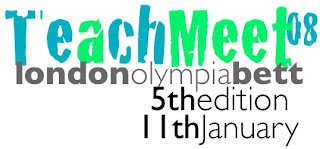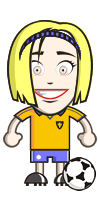…. to be continued!
|
|
|
|

I was very excited to read in The Times yesterday that there is now a rapid train linking Madrid and Barcelona.
Reading on, 185mph train marks latest step in Spanish high-speed revolution reports that a journey taking 6 hours by car takes 2 hours 35 minutes on the new AVE rail link. This is not the only high speed link with a service linking Madrid and Valladolid in 55 minutes, and, most exciting of all for me, Madrid and Málaga in 2 hours 30 minutes. My family often holiday near Málaga and never before have we considered visiting Madrid – it’s now possible to do as a day trip. Whoopee :o)
Apparently, if the train is 30 minutes late, you get a full refund – great news! Having said that, the article does point out that this is unlikely as Spanish high speed rail punctuality is second only to the Japanese.
And the plan is that by 2020 there will be 10,000 km of high speed rail track and 90% of the Spanish population will live within 50km of an AVE station.
The comments on the article are varied – one questions whether this is a good way to spend money on rail travel when the the normal trains are overcrowded, smelly and late whilst another praises the cleanliness of them. There is praise for the service, pointing out that it’s better than flying (and faster if you factor in the rigmarole of booking in and collecting luggage etc).
And most of all, comments lamenting the contrast with Britain where we have 80 miles of high speed track. “It is ridiculous that the country that invented rail travel now has only 80 miles of high-speed track between Folkestone and St Pancras for the Eurostar trains,” Gerry Doherty, general secretary of the TSSA transport union, said. “We have to follow the example of Spain and France by making rail quicker and cheaper if we are to meet the challenge of low-cost airlines.” He goe son to point out that the journey between London to Glasgow – shorter than Spain’s newest line – takes 4½ hours with a walk-on, second-class fare of £130.
“We not only have the most expensive fares in Europe, we now have the slowest rail service as well,” he said. Disappointing isn’t it?

After an exhausting day at BETT, I’m currently enjoying a glass of wine at Teachmeet and listening to lots of good ideas for using technology in the classroom. The rules are that you either have 7 minutes or 2 minutes to present your message. Powerpoint is mildly boo-ed and no sales pitches.
I’ll let you know what I learn as and when!
There are lots of different models for delivering MFL at KS2 , and the Pathfinder projects investigated a number of them. Coventry City Council was one of those Pathfinder LAs and developed an interesting project called Language Detectives, now Investigating Languages. I had heard a basic outline of what it involved and the theory behind it but never actually seen any of the materials or had the detail explained so, as I was starting to feel a bit of a fraud when I mentioned it as a model then failed to give any further detail, and also because I wanted to know, I jumped at the chance to attend Sian James’ presentation.
Sian has led the project for the last year, taking over from Nick Jones who began it. In a nutshell, it is a two year language awareness course with CD and activity book for each year which, as Sian put it, ‘aims to open up a world of language learning, of language awareness and language skills’. The USPs of Investigating Languages seem to be
It was originally conceived as a way for all Coventry schools, where the average number of languages spoken is 10 (one has 42), to have a combined approach to PLL. All schools in the LA have the materials and use them to suit their needs (as above) – I like this as it gives a common core whilst still allowing schools a say in the languages they teach, when and how.
Before explaining Investigating Languages, Sian actually highlighted a website I’d visited before, but hadn’t fully explored. Newbury Park School in Redbridge has a vast number of languages spoken by its school community and has developed a brilliant site featuring all the languages. For each one, a child from the school presents greetings and other short phrases in video clips with the word in the original script and also Roman script. There are also Q&A such as What’s your name?, a page that shows where the language is spoken not just as a first language but also as a second or third official language, and also a resource pack for each language to download. I love the site not just for the breadth of languages from which you can choose but also because it shows that this school values the experiences that its pupils bring in terms of their language skills and heritage.
Back to Investigating Languages (IL) – we began with a list of words. Sian asked us questions about what we thought we had to do, what we thought the words might be (greetings) and how we knew (we recognised some of them and made an assumption based on our experience). We then worked in pairs to work out the languages. Some we guessed, some we used deductions based on the way the words look, how they relate to other words we did know etc. which is a process that IL is seeking to nurture.
The next activity involved 16 strips, each with 6 words on, half with the language written at the top. We quickly worked out that the words were months of the year and the ones with the language labelled were January –June. Again we were asked for our thoughts and ideas, and encouraged to discuss our reasoning. Using clues such as script, use of capital letters, number of accents, we paired the cards. Then we had a go at pronouncing them, using one of the activities on the CD where four languages are featured at the top of four columns so direct comparison can be made. It was interesting to see how we were willing to hazard a guess when the script was familiar, but Russian or Greek was met with silence – how like kids us teachers can be! We found out interesting facts such as the months in Polish are named after activities that are done in those months and that the word for January in Dutch and Swahili is the same.
Sian showed us more activities from the CD and provided us with some examples from the book as well as the promise of a sample CD ( the previous group had taken all the ones she had with her!) Another favourite was an audio clip in French that she played with no preamble. We deduced that it was about someone visiting London, seeing Big Ben and David Beckham and saying hello to him. We put actions to the key words and then listened to the same clip in Swahili, using the same actions at the appropriate points. An amazingly simple activities but so much in it about use of cognates, word order, knowledge of linguistic conventions etc.
And another involved reordering words from listening to an audio clip. Whilst I don’t like English translations being displayed usually when new words are presented, in this case it demonstrated a point abut word order as the English word moved with the Spanish one.
Sian told us that after two years of this, when Year5 and 6 start studying a discrete language, the pupils are not content with single words; they want to know how to make sentences and paragraphs immediately because their confidence is such that they feel they can cope with it.
I’ll definitely be investigating further – even if we don’t purchase the materials (Sian is currently updating them so hang on until June was her advice!), the ideas and concepts are brilliant, aren’t they!

Much excitement this evening as Chris Fuller has just posted a video on his blog Facing the currently unknown related to the Euro 08 project he’s organising. The Project involves classes finding out about one of the countries participating in Euro 08, using Web2.0 tools to share what they find, and hopefully all meet up in June for a football / netball tournament in Devon at Chris’ school, Edgehill College.
Filmed at ITV West Country and aided by Seth Conway, Chris drew the names of the schools participating in the Edgehill Euro08 project to pair them with a country participating in the Euro 08 tournament. First out of the draw was … Whitehouse Common Primary School. The kids were sure we’d get Spain when the draw was done as I’m so Spanish crazy, but Spain stayed in the hat and instead we drew….SWEDEN!
So, after Christmas we’ll be finding out all we can about Sweden as well as practising our football and netball skills – we might even ask IKEA to sponsor us!
To find out more about The Project, visit Chris’ blog where you can watch a presentation that explains it all better than I can – there is still space for more schools to become involved, and I know he’d love to hear from you. Spain are still up for grabs, as are France. Doesn’t matter if you don’t live in Devon – Whitehouse Common is near Birmingham and there’s a school in Fife taking part!
I’ve made a start on learning some Swedish – thanks to Translation Guide. The title is supposed to say – Sweden all the way – so if you know Swedish, let me know if it’s correct!
Whilst reading my Googlereader feed, I came across a post by Steve Beard on his Thunder blog about some software that allows you to make any photo talk. Being a fan of Voki etc, this attracted my attention. I’ve seen the results of using a piece of software to make a teddy bear talk demonstrated by Nick Falk and Otso Bear but this promised to make any photo talk, not just bears. But it got even better! PQ DVD are offering the software (normal price $59.90) FREE if you blog about it – so that’s what I’m doing!
Have a look at the demo and see what you think. I’d be a happy Mum if I received this on Mother’s Day!!
I’m horrified to discover that it’s nearly two weeks since I last blogged! Where is the time going?
Well, with Christmas fast approaching, I thought it might be a good time to share some Christmas ideas.
I prepared a presentation for the Birmingham RSG last year -you can view it as a Slideshow below – but here are a few of the highlights.
If you’re looking for French carols, have a look at http://www.csdraveurs.qc.ca/musique/noel/
It’s always great to get something free and there’s lots here : a great French-Canadian site with songs sung by children, complete with visual presentation of the words.I think it would work really well on an IWB and also as a daily starter activity as it’s an Advent calendar with a song behind each door. My favourites are the first two, a song about peace (Enfants de Noël) and an amusingly animated song about world food (La Tourtière).
For Spanish, why not check out another Canadian website –
where you’ll find a webquest based on six articles about Christmas in Spain, Mexico and South America. The articles and accompanying questions are all in English (and in Spanish too sometimes) and include recipes and traditions. Bag the ICT suite or the laptop trolley and see what your pupils can discover for themselves!
Another favourite site is
http://club.telepolis.com/belenes/ a downloadable ‘belén’ , postcards to send by e-mail, some carols and, (perhaps most usefully?) tips in Spanish on how to wrap awkwardly shaped Christmas presents!
And the final one I discovered on an Edublog winning blog El Tinglado – a link to a Wiki full of Spanish carols and music for Christmas – El Rincón de los Villancicos.
With words, music, midi files of the carols and videos, this is a one stop concert planner! Just add singers!
Well – perhaps this is the answer to lack of global awareness of our pupils? Although I’m not sure that geographical knowledge will necessarily translate into global understanding, at least she can find her way around a world map and perhaps one day, visit all these places?
(Thanks to My Wonderful World Blog via Langwitches for blogging this clip first! )
¡Vámonos! ©2025. All Rights Reserved.
Powered by WordPress.
Theme by Phoenix Web Solutions